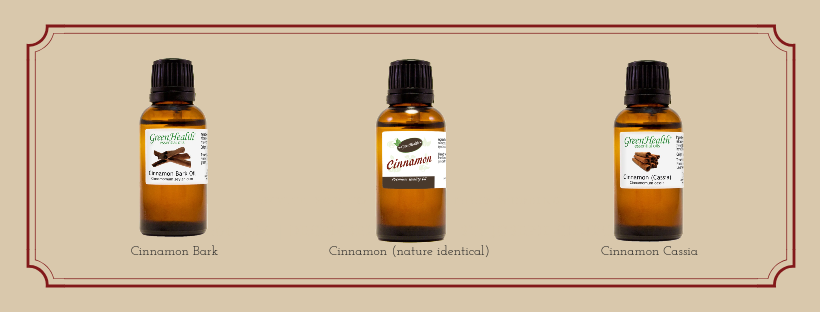
Throughout the world of essential oils there are many different types of oils. Some oils have many different types or species and you find yourself very confused on which oil is the best for you. Cinnamon essential oils are one of the most common multi-variation oils. There is Cinnamon Bark (Cinnamomum Verum) , Cinnamon Leaf (Cinnamomum zeylanicum), Cinnamon (nature identical) & Cinnamon Cassia. Usually sourced from the bark of the cinnamon tree, cinnamon essential oil is said to offer a wide variety of benefits and uses.
Different types of Cinnamon Oil:
Cinnamon Bark (Cinnamomum Verum) *Most common cinnamon oil*
The bark is peeled off or chipped & is distilled with steam or carbon dioxide to make the bark essential oil. Cinnamon Bark essential oil contains cinnamaldehyde & eugenol as it’s main constituents. The bark oil contains more Cinnamaldehyde, & has the stronger cinnamon aroma. Cinnamon bark oil is recommended by herbalists for its antimicrobial and antiviral properties, Great for diffusing. This particular type of Cinnamon essential oil is a strong irritant, & should never be applied directly to skin diluted or undiluted.
Cinnamon Leaf (Cinnamomum zeylanicum)
Cinnamon leaf oil has a musky and spicy scent, and a light-yellow tinge that distinguishes it from the red-brown color of cinnamon bark oil Cinnamon leaf oil is lighter, cheaper and ideal for regular use. Cinnamon leaf oils contain at least 80% phenols. Cinnamon Leaf is said to reduce inflammation, Kills and repels bacteria, parasites and bugs, Promotes stress-relief and improved brain function, and Boosts energy, mental focus and libido as well as many other positive benefits. Always dilute if applied directly to the skin.
Cinnamon Cassia (Cinnamomum cassia)
Cinnamon Cassia is steamed distilled from the Bark of the tree with a Golden Yellow/Brown color to it. Cassia is similar to true cinnamon and mimics some of its benefits and uses. They’re from the same botanical family, and they both have a spicy, warm aroma — but Cinnamon Cassia oil is sweeter than cinnamon and is sometimes used as an economical substitute within fragrance applications. Helps fight bacteria and boost your immune system. Also helps as a great bug repellent. Always dilute if applied directly to the skin.
Cinnamon oil (Nature identical)
Nature identical oils are synthetic oils, having the identical chemical build-up as the ones from the plant. Nature identical oils smell like their natural equivalents, but contain on average noticeably less ingredients. Cinnamon Nature identical is close to our cinnamon bark oil.

How to use:
When combined with a carrier oil (such as jojoba, sweet almond, or avocado), cinnamon essential oil can be applied to the skin or added to baths. Essential oils can overall cause chemical burns and other adverse effects if they aren't properly diluted in a carrier oil and applied directly to the skin. Cinnamon essential oil also can be inhaled after sprinkling a few drops(2-3) of the oil onto a cloth or tissue, or into an aromatherapy diffuser.
SAFETY:
We recommend a maximum dilution of 0.05% for topical applications. Do not use if pregnant or breastfeeding.
Please note, the International Federation of Aromatherapists do not recommend that Essential Oils, Carrier Oils, or Hydrosols be taken internally unless under the supervision of a Medical Doctor who is also qualified in clinical Aromatherapy.
This statement has not been evaluated by the Food and Drug Administration. This product is not intended to diagnose, treat, cure, or prevent any disease.
Any Questions or concerns ? Please call us at 1(888) 936-3397 or email us at Sales@wfmed.com
